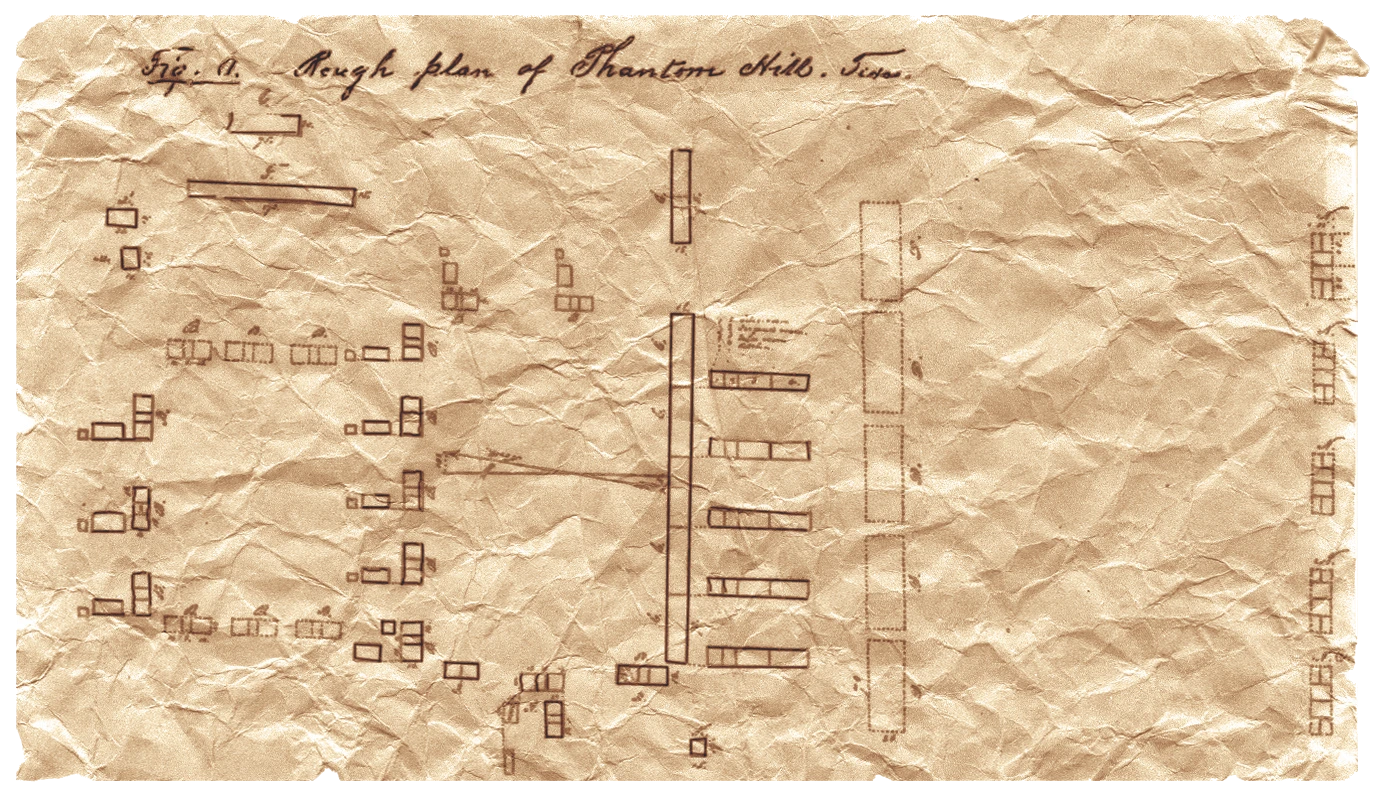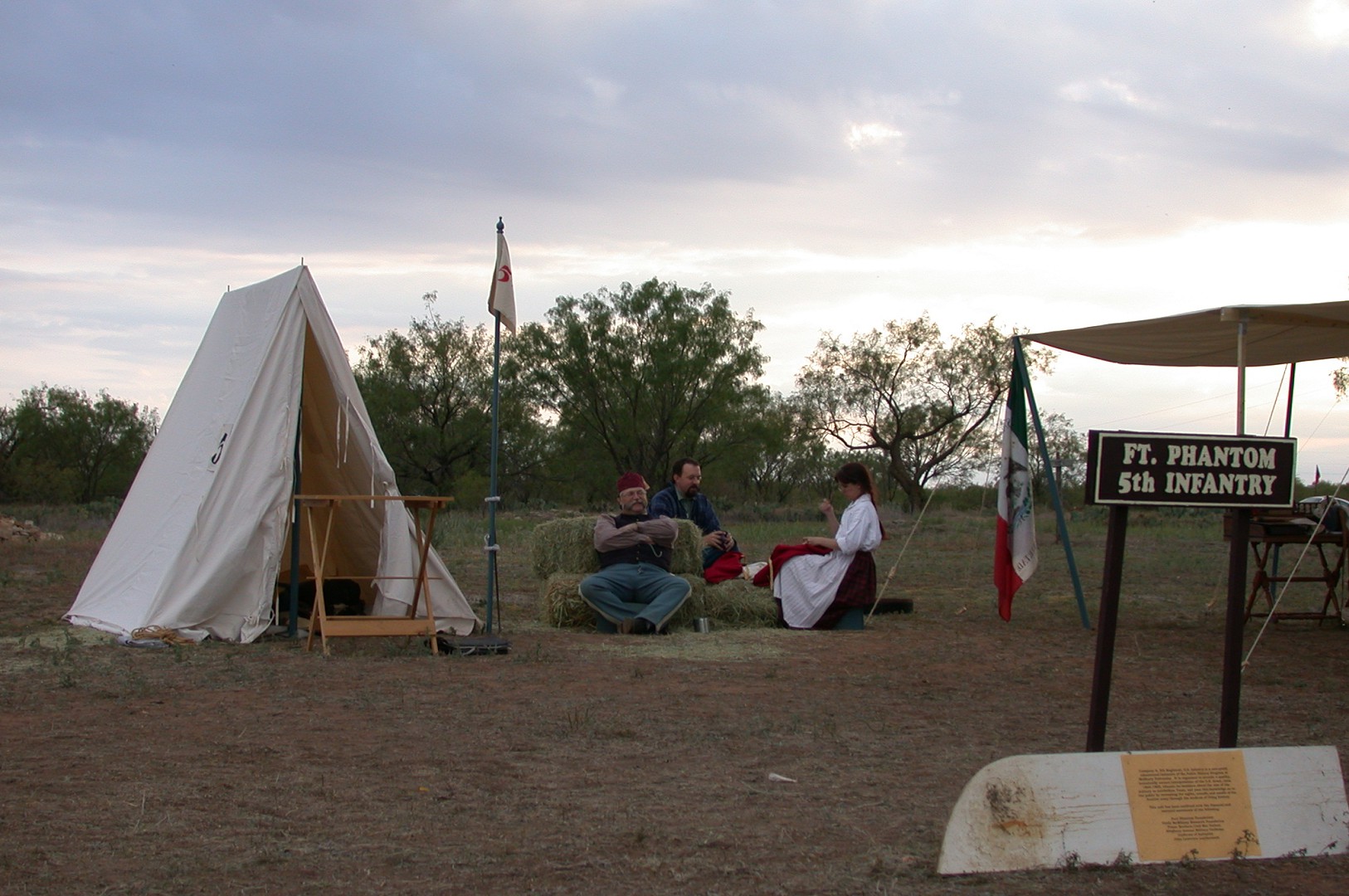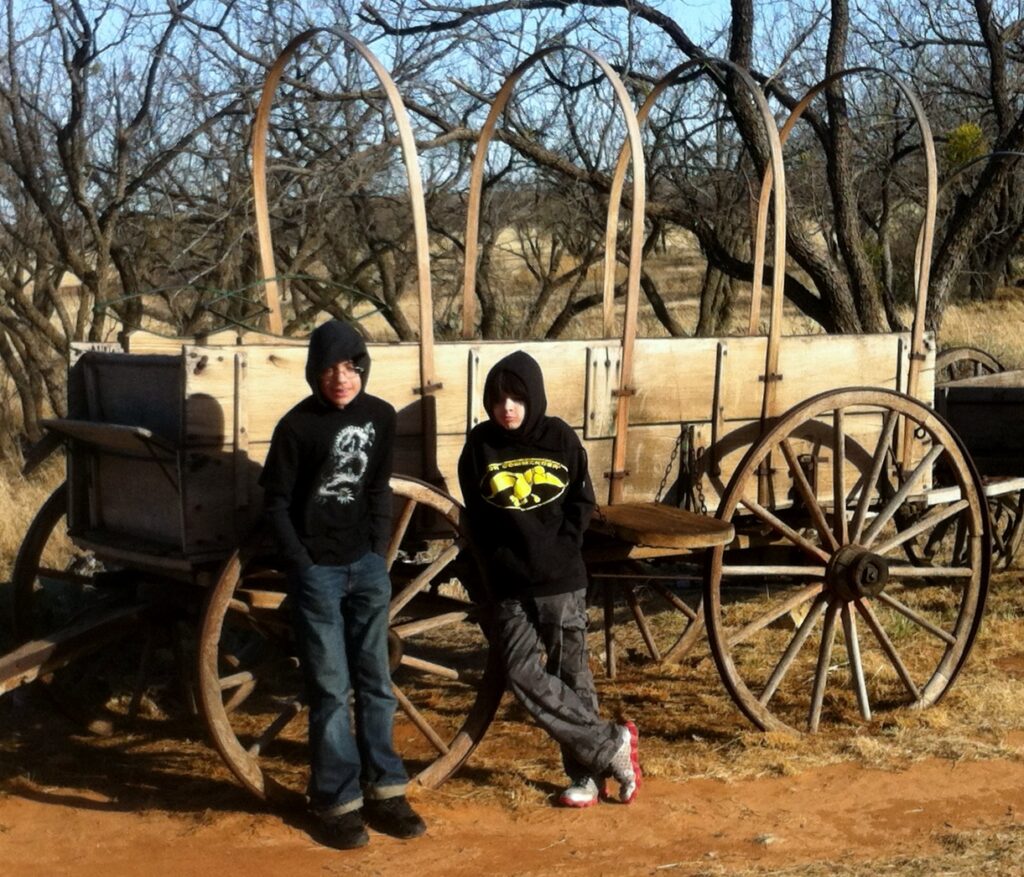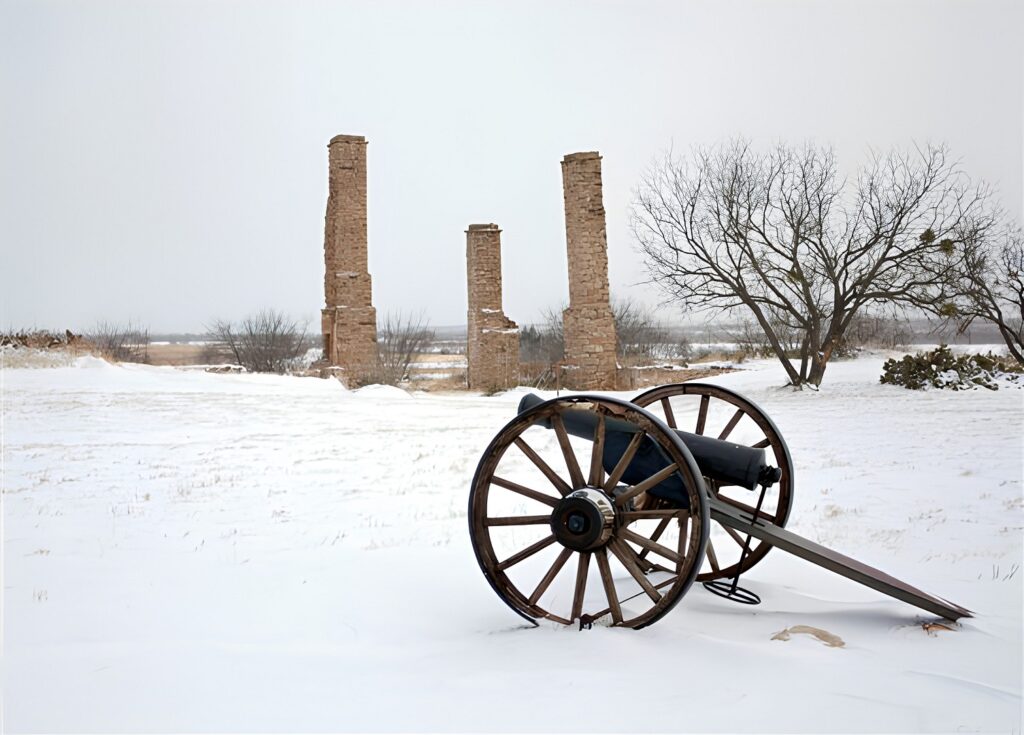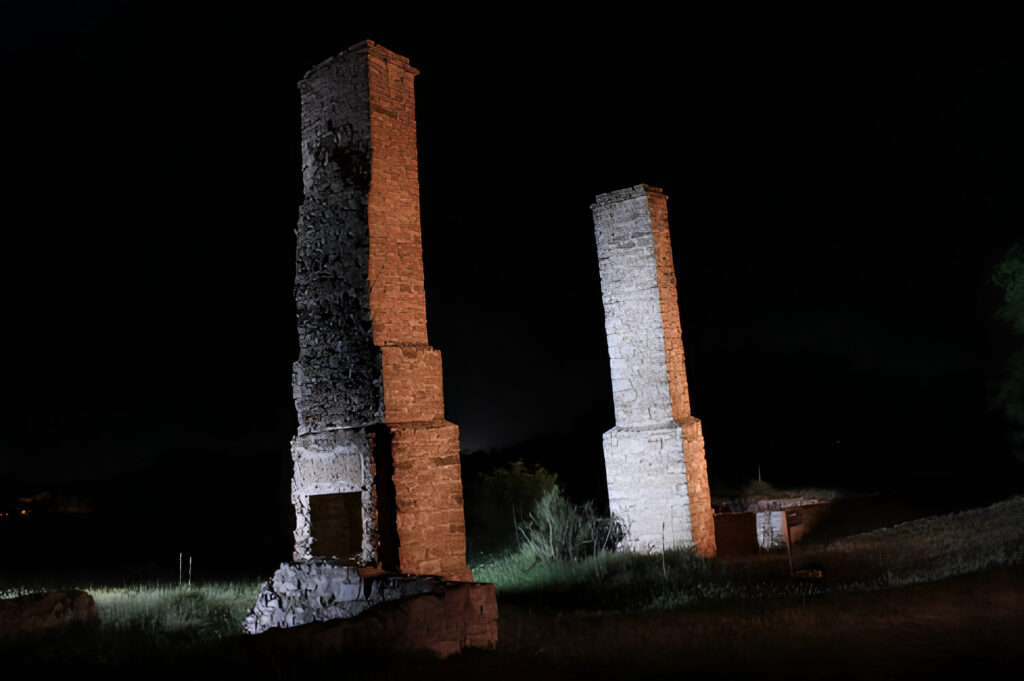Several officers, including Col. John J. Abercrombie, had brought their families with them to the fort. The soldiers’ first task was to set up canvas tents to house the officers and their wives. The tents were surrounded with fences made from brush. One letter said the soldiers spent their time “digging, chopping, sawing, hauling, and pulling” – constructing the fort with help from two carpenters, a blacksmith, and a stonemason. Winter was coming to the Southern Plains, and building the quarters was important.
During the first month, the soldiers started to build more permanent housing. The lack of materials in the area limited the type of structures that could be made so they built pole huts with dirt floors and roofs made of thatched grass gathered from the surrounding prairie. The packed dirt was hard to keep clean, especially during times of rain. The dusty floors served as a home for ants, snakes, and other vermin. The grass roofs were no better; the thatch got wet during rains and began to rot and smell. It was also a good home for spiders and other insects and created a serious fire hazard.
